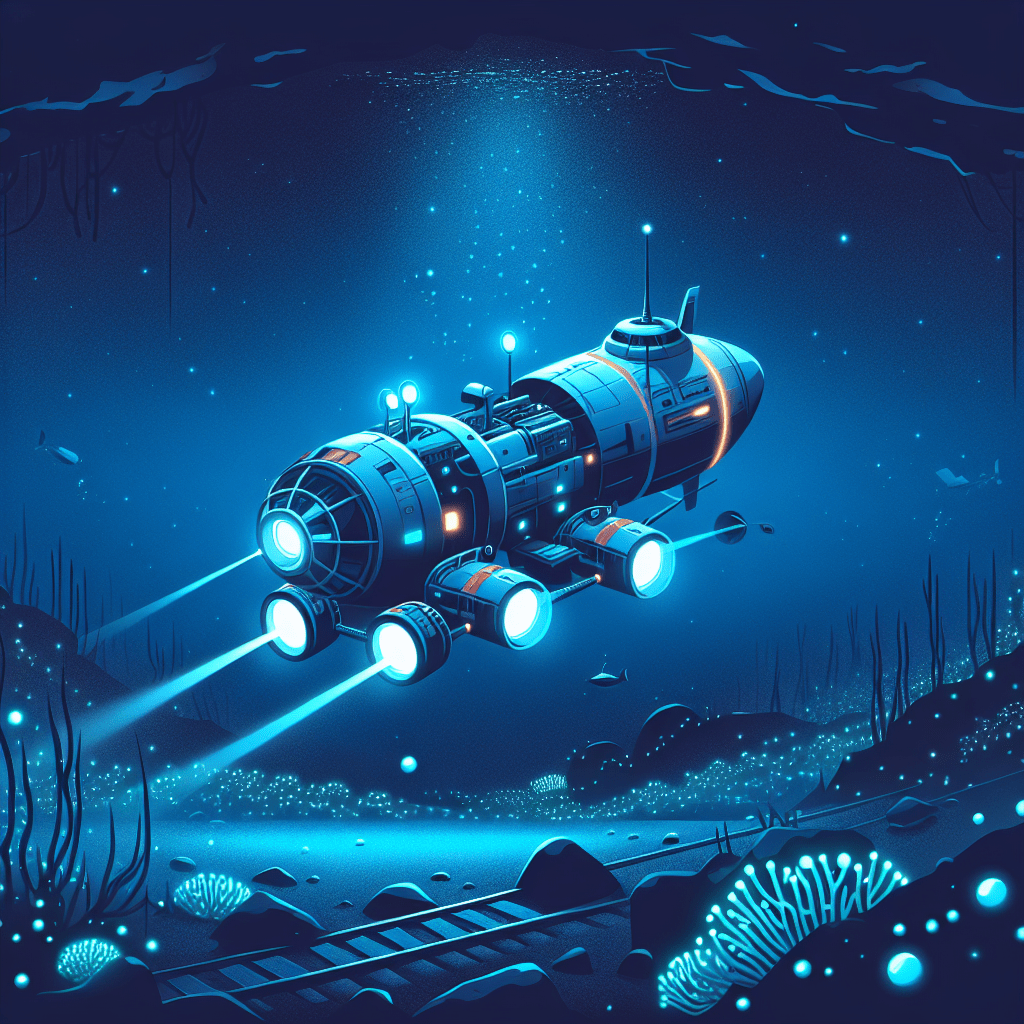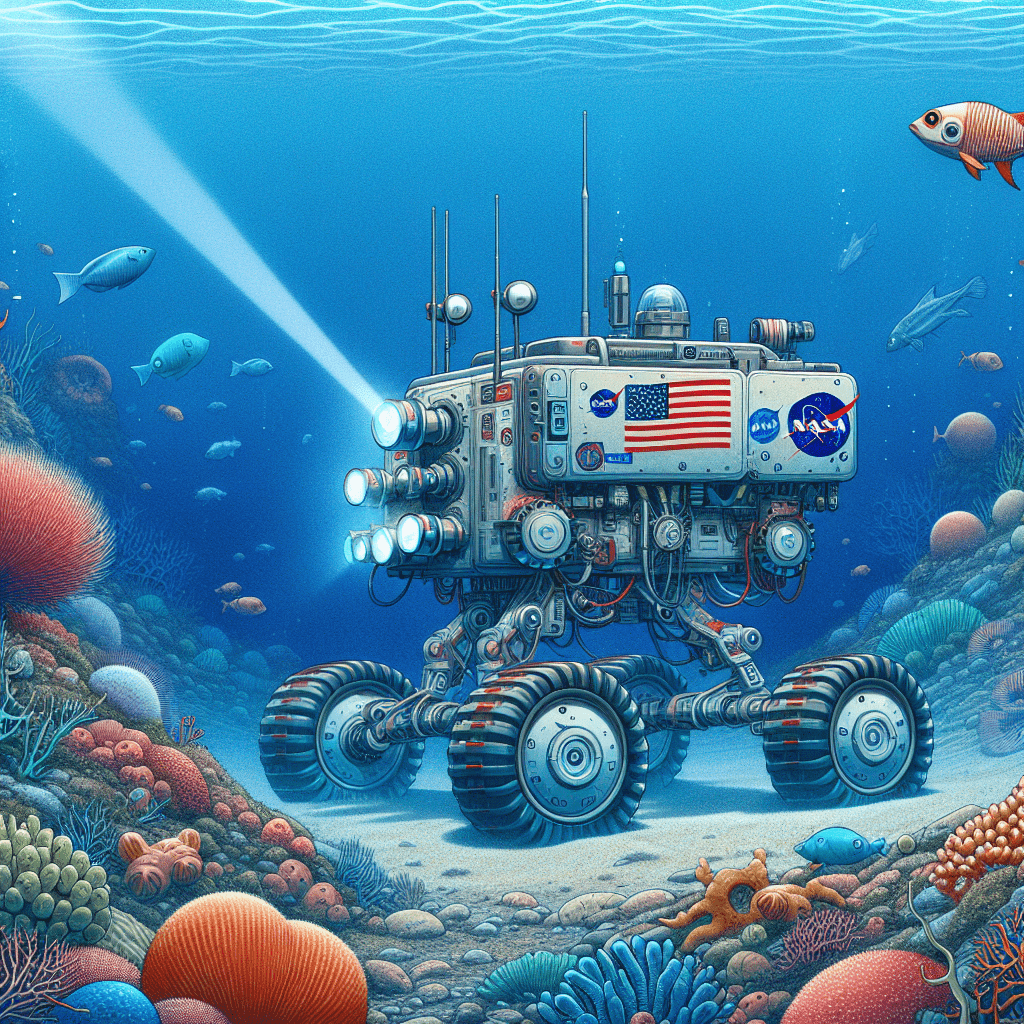-
Table of Contents
Introduction
NASA, the National Aeronautics and Space Administration, primarily focuses on space exploration rather than deep-sea exploration. However, NASA has been involved in certain deep-sea research projects and collaborations, particularly in studying extreme environments on Earth that may have similarities to extraterrestrial environments.
The Importance of Deep Sea Exploration for NASA
Did NASA explore the deep sea? This is a question that has intrigued many people, and the answer might surprise you. While NASA is primarily known for its exploration of outer space, it has also played a significant role in deep sea exploration. The importance of deep sea exploration for NASA cannot be overstated, as it has provided valuable insights and knowledge that have contributed to our understanding of both the Earth and outer space.
One of the main reasons why deep sea exploration is important for NASA is that the deep sea is often considered an analog for space. The extreme conditions found in the deep sea, such as high pressure, extreme temperatures, and darkness, are similar to those found in outer space. By studying the deep sea, NASA scientists can gain valuable insights into how humans and technology can survive and thrive in these harsh environments. This knowledge is crucial for future space missions, as it helps scientists develop the necessary tools and technologies to explore and colonize other planets.
In addition to being an analog for space, the deep sea is also a treasure trove of biodiversity. It is estimated that more than 80% of the Earth’s biodiversity is found in the deep sea, making it a rich source of new species and genetic material. By studying the deep sea, NASA scientists can gain a better understanding of how life can adapt and survive in extreme environments. This knowledge can be applied to the search for extraterrestrial life, as it provides insights into the conditions under which life can exist.
Furthermore, deep sea exploration has also contributed to our understanding of climate change. The deep sea plays a crucial role in regulating the Earth’s climate, as it acts as a sink for carbon dioxide and other greenhouse gases. By studying the deep sea, NASA scientists can gain insights into how climate change is affecting this delicate balance. This knowledge is crucial for developing strategies to mitigate the impacts of climate change and protect our planet.
While NASA has primarily focused on outer space exploration, it has also made significant contributions to deep sea exploration. One of the most notable examples is the NASA Extreme Environment Mission Operations (NEEMO) program. NEEMO involves sending astronauts and scientists to live and work in an underwater habitat called Aquarius, located off the coast of Florida. This unique environment allows scientists to simulate the conditions of space missions and test new technologies and procedures. The knowledge gained from NEEMO missions has been invaluable for NASA’s space exploration efforts.
Deep sea exploration is of great importance for NASA. It provides valuable insights into the extreme conditions of space, helps scientists understand how life can adapt and survive in extreme environments, contributes to our understanding of climate change, and aids in the development of technologies and strategies for future space missions. While NASA is primarily known for its exploration of outer space, its involvement in deep sea exploration highlights the interconnectedness of our planet and the universe. So, the next time someone asks if NASA explored the deep sea, you can confidently say yes, and explain why it is so important.
Unveiling the Secrets of the Deep Sea: NASA’s Endeavors
NASA’s interest in the deep sea can be traced back to the 1960s when the agency recognized the similarities between the extreme environments of outer space and the deep ocean. Both environments are characterized by high pressure, extreme temperatures, and a lack of sunlight. These similarities prompted NASA to collaborate with oceanographers and marine biologists to study the deep sea and gain insights that could be applied to space exploration.
One of NASA’s most notable deep-sea expeditions was the NEEMO (NASA Extreme Environment Mission Operations) project. NEEMO involved sending astronauts and scientists to live and work in an underwater habitat called Aquarius, located off the coast of Florida. This unique habitat allowed the team to simulate the conditions of space exploration while also conducting research on the marine ecosystem.
During NEEMO missions, astronauts would spend weeks living underwater, conducting experiments, testing equipment, and studying the effects of long-duration space missions on the human body. These missions provided valuable data on the physiological and psychological challenges that astronauts might face during extended space travel. Additionally, the underwater environment allowed scientists to study marine life and ecosystems, providing insights into the potential for extraterrestrial life in the oceans of other planets.
Another significant contribution of NASA to deep-sea exploration is the development of advanced technologies and instruments. The agency’s expertise in engineering and robotics has led to the creation of innovative tools that have revolutionized deep-sea exploration. For example, NASA’s remotely operated vehicles (ROVs) have been used to explore the depths of the ocean, collecting samples, capturing high-resolution images, and even recovering artifacts from shipwrecks.
Furthermore, NASA’s involvement in deep-sea exploration has also led to collaborations with other organizations and agencies. For instance, the agency has partnered with the National Oceanic and Atmospheric Administration (NOAA) to study the impact of climate change on the ocean and its ecosystems. By combining their resources and expertise, NASA and NOAA have been able to gather crucial data on ocean temperature, salinity, and sea level rise, contributing to a better understanding of our planet’s changing climate.
Exploring the Unknown: NASA’s Deep Sea Missions
One of NASA’s most notable deep-sea expeditions took place in 2016, when a team of scientists and engineers embarked on a month-long journey to the depths of the Atlantic Ocean. The mission, known as the NASA Extreme Environment Mission Operations (NEEMO), aimed to simulate the conditions astronauts might experience during future space missions. By living and working in an underwater habitat called Aquarius, located off the coast of Florida, the NEEMO team gained valuable insights into the challenges of long-duration space travel.
The NEEMO mission not only provided NASA with valuable data for future space exploration but also contributed to our understanding of the deep-sea environment. The team conducted various experiments to study the effects of isolation, extreme pressure, and limited resources on human physiology and psychology. These findings have implications not only for space travel but also for deep-sea exploration and the potential colonization of other planets.
In addition to NEEMO, NASA has also collaborated with other organizations to explore the deep sea. One such collaboration was with the National Oceanic and Atmospheric Administration (NOAA) in 2019. The joint mission, known as the Okeanos Explorer, aimed to map and explore the uncharted regions of the Pacific Ocean. Equipped with advanced underwater technology, the team discovered new species, underwater volcanoes, and even ancient shipwrecks.
The Okeanos Explorer mission not only expanded our knowledge of the deep-sea ecosystem but also provided valuable training opportunities for NASA astronauts. The extreme conditions and limited visibility in the deep sea closely resemble the challenges astronauts face during spacewalks. By participating in deep-sea missions, astronauts can develop the necessary skills and adaptability required for future space exploration.
While NASA’s deep-sea missions have been relatively few compared to their space missions, they have demonstrated the agency’s commitment to exploring the unknown, regardless of whether it is in outer space or the depths of our oceans. These missions have also highlighted the interconnectedness of our planet’s various frontiers and the importance of understanding and preserving them.
Deep Sea Discoveries: NASA’s Contributions to Ocean Exploration
One of the ways NASA has contributed to deep-sea exploration is through the development of advanced underwater vehicles. These vehicles, known as remotely operated vehicles (ROVs), are equipped with state-of-the-art technology that allows scientists to explore the depths of the ocean without physically being there. NASA’s experience in designing and operating robotic systems for space missions has been instrumental in the development of these ROVs, enabling them to withstand the extreme conditions of the deep sea.
In addition to ROVs, NASA has also played a crucial role in the development of autonomous underwater vehicles (AUVs). These vehicles are capable of operating independently, collecting data and conducting experiments in the deep sea. NASA’s expertise in autonomous systems has been invaluable in the design and operation of these AUVs, allowing scientists to gather information from areas of the ocean that were previously inaccessible.
Furthermore, NASA’s satellite technology has been utilized in deep-sea exploration. Satellites equipped with advanced sensors and imaging capabilities have been used to monitor and study various aspects of the ocean, such as sea surface temperature, ocean currents, and the distribution of marine life. This data has provided scientists with a better understanding of the complex dynamics of the deep sea and its impact on the global climate.
NASA’s involvement in deep-sea exploration has also extended to the study of underwater volcanoes. These volcanoes, known as hydrothermal vents, are located deep beneath the ocean’s surface and are home to unique ecosystems that thrive in extreme conditions. NASA’s expertise in studying volcanic activity on other planets has been applied to the study of hydrothermal vents, providing valuable insights into the origins of life on Earth and the potential for life on other planets.
In addition to technological contributions, NASA has also collaborated with other organizations and institutions to conduct deep-sea research. For example, NASA has partnered with the National Oceanic and Atmospheric Administration (NOAA) to study the impact of climate change on the ocean. By combining their expertise in climate modeling and satellite technology, NASA and NOAA have been able to monitor and predict changes in the ocean’s temperature and chemistry, providing valuable information for policymakers and scientists.
Conclusion
In conclusion, NASA has primarily focused on exploring outer space rather than the deep sea. While they have conducted some research and experiments related to oceanography, their main mission and expertise lie in the field of space exploration.


